Today is the day we start on the supposedly bad roads. There is no more tar from Bandajuma until the Liberian border and I hope the rain didn’t ruin the roads too much.
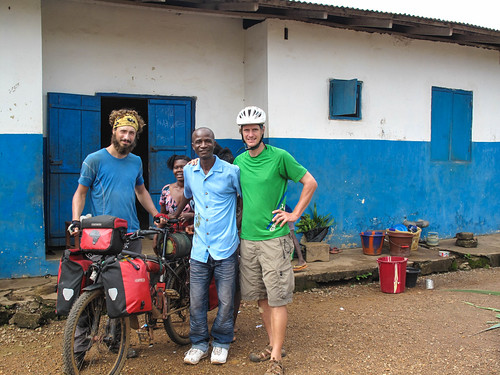
Just like in Guinea, it is hard to believe that this is the main road link between two countries. It is beautiful but prevents any serious traffic.
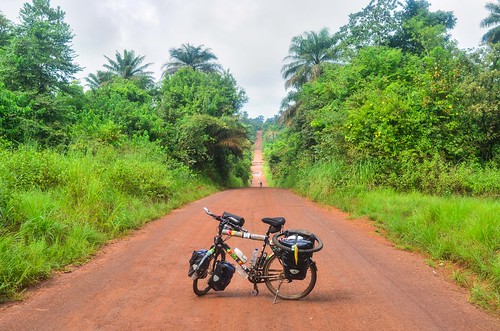
Nearly everybody likes pictures in Sierra Leone. When about to start the downhill, I hear “Snap me!” behind me. A lady collecting wood is standing here with a big smile. Here people don’t say “to take a photo“, they say “to snap“, the same way that in India I heard the extensive use of “to click a picture“.
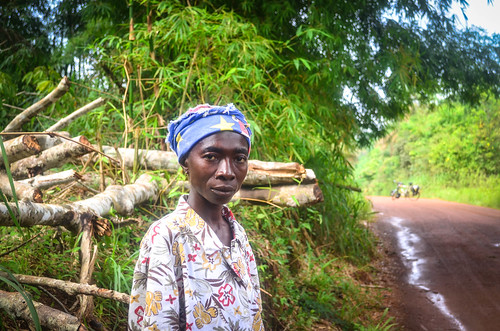
The road gets worse and worse from now on. There are sometimes big puddles of muddy rainwater which are impossible to avoid. I switched from my closed shoes to amphibian flip-flops.
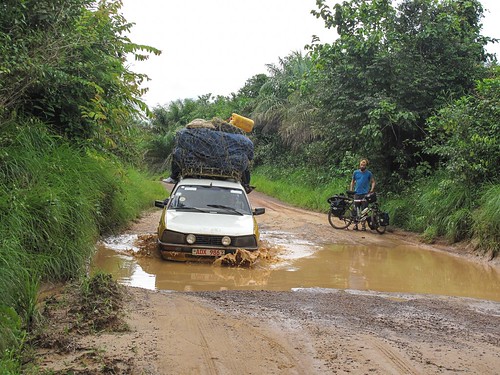
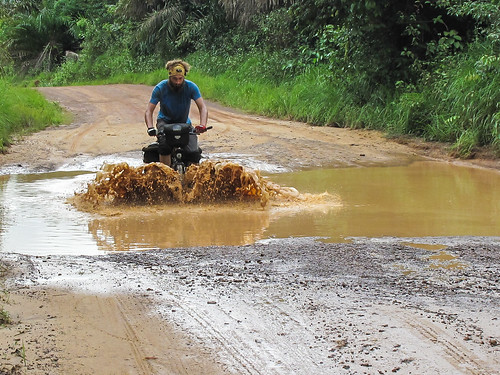
The water gets over my low-rider panniers sometimes. They really have to be waterproof.

This muddy water is not good at all for our chains. Johannes makes a clean & oil stop in a village. This one has crazy kids, jumping around us, playing hide and seek with the camera, dancing like if possessed, daring asking “gimme mony” and running away, singing Pomouy songs, … there is way too much unchanneled energy here.

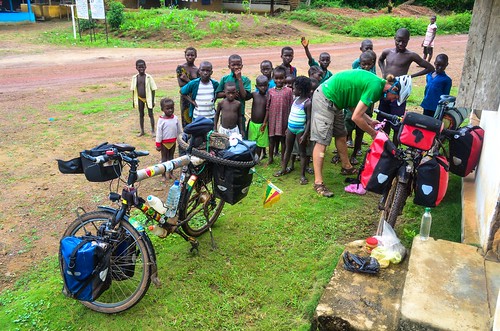
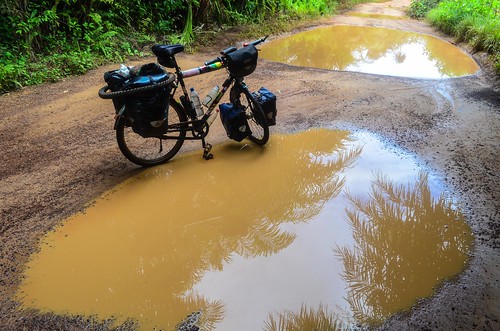
The open shoes are perfect for crossing the water pools, but the big downside is the resistance to insects. I stopped to film a colony of ants on the way, drawing an interesting and impressive black pipe crossing the road. They are going so fast, while soldiers stay immobile, fiercely heads up, on both sides of the “channel”, like policemen blocking the traffic to let the children cross.
I didn’t notice these soldier ants were climbing on my feet. And despite their tiny size, they can bite really hard!
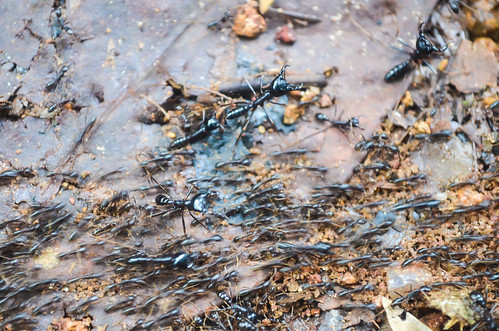
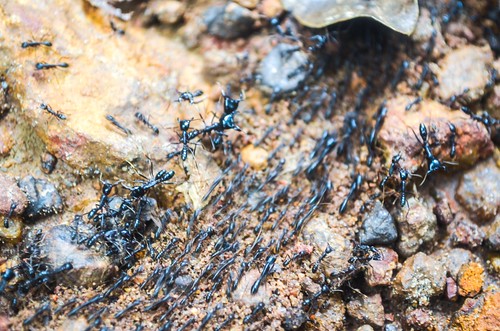
The narrow road is still nice until Potoru, the big village.
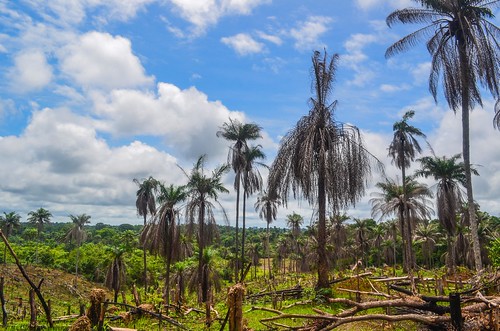
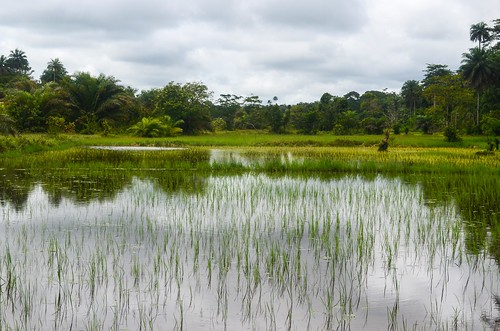
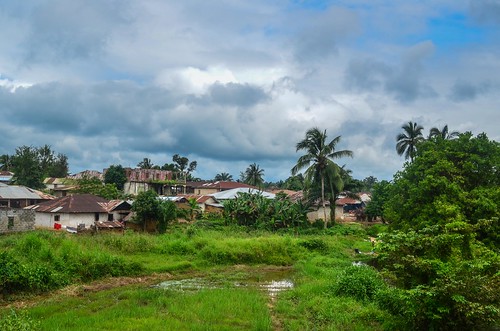
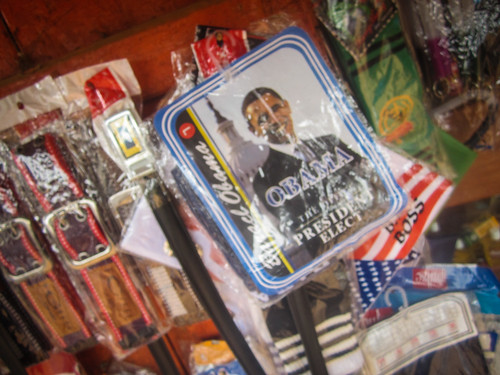
While waiting and sheltering from the rain in Potoru, we made the decision to go to Tiwai island. This is a wildlife sanctuary 15 (bad) kilometers away, but in another direction than ours. So we would go there, sleep on the island, and come back the next day.
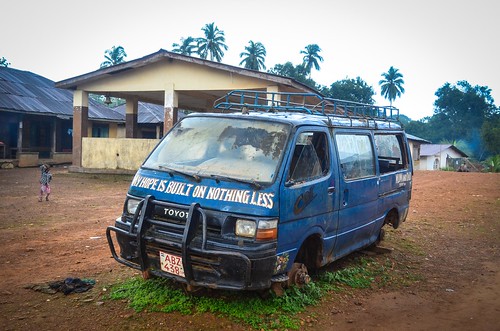
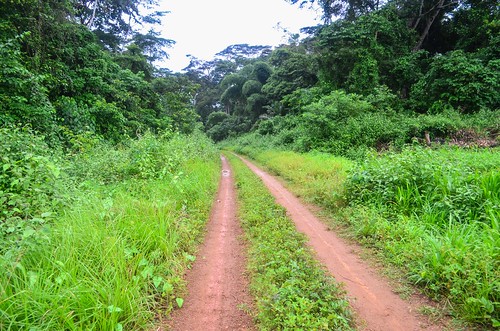
The Tiwai island is a wildlife sanctuary on a river, the Moa river, which originates in the Fouta Djalon (apparently like all the rivers in West Africa). Before it was identified for wildlife conservation, there was mining ongoing on it. Today, there is a research center, although it remained empty for this year as no scientist visited it. The island hosts many species of monkeys and the rare pygmy hippos.
Tourism also picked up and it is possible to spend the night in one of the tent there against some USD. The only way to reach the island is via a motor boat. We head there after a 5-10 minutes ride with our bikes on it.
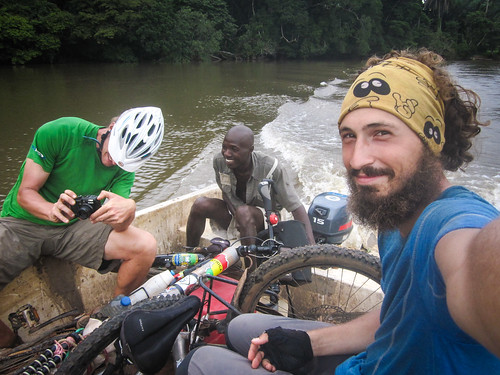

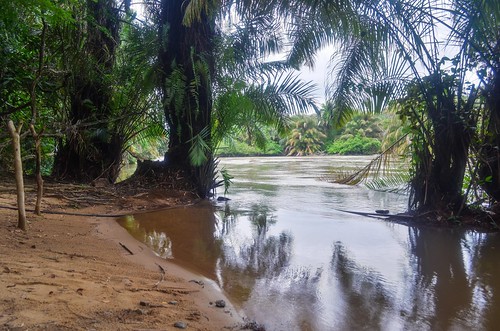
The first impression is that we are really in the jungle in the middle of nowhere (zoom out here), with our bicycles. There are no roads and nothing on the island except the research center and the visitor center with the tents. It’s not possible to cycle, even with an unloaded mountain bike, as the paths are either covered by huge roots or hidden by vines.
This is the low season and we are the only visitors. They are renovating the visitor center and several carpenters are working on site. Due to its remoteness and impracticality, I doubt there are many visitors even in the dry season …
Once the night falls, the carpenters leave the island for their village and we are left alone with the island keeper (and another man and a lady coming out of nowhere. Even on an uninhabited island, there are still people showing up from the bush). We eat our 500 grams of pasta before taking a walk at night (not too far and tracking our position via GPS). We hear more sounds than we see animals, those include a green snake and something I’d call the hammerhead crab spider.
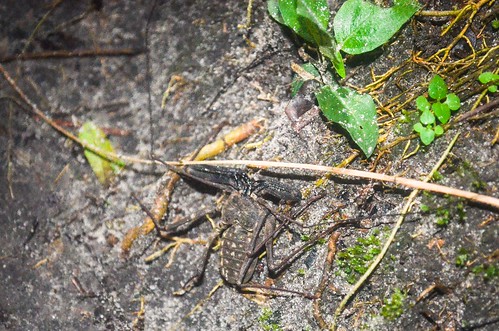
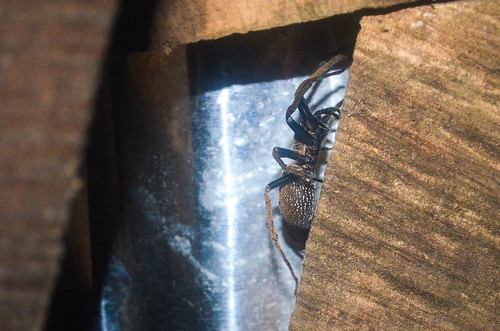
The next morning, we take a walk with the compulsory guide. Even with our GPS on a 12 square kilometers island, the island keeper will not let us walk alone outside of the visitor center. He tells us the story of French visitors who got lost some years ago and called their embassy. They were rescued from outside pulling out all the stops while the local guides were not even aware of the situation. I cannot tell if this story is true (there is no phone coverage on the island), but anyway we have to take a guide with us.
That makes money for the guide on the top of the 10 USD park entrance. The fees are the double than 4-5 years ago, but are still far far below what is practiced in Eastern Africa where being asked 100 USD for a day in a park is not surprising. My guess is that Tiwai will quickly catch up with them. Apparently they have already refused to make a walking path along the island shore, which would allow visitors to have a chance to spot the rare and famous pygmy hippos, in order to preserve the business of the high speed boat trip (50 USD per boat), the only chance to have a chance to spot them.

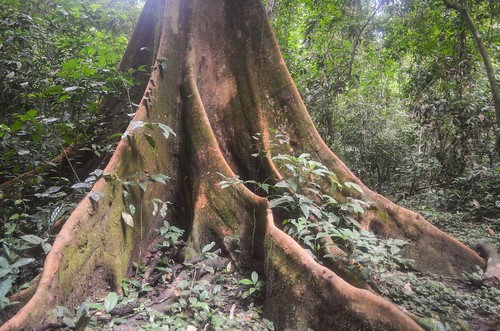
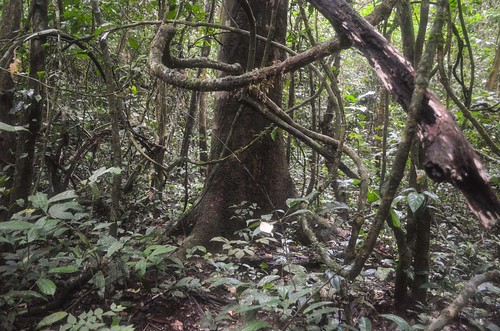


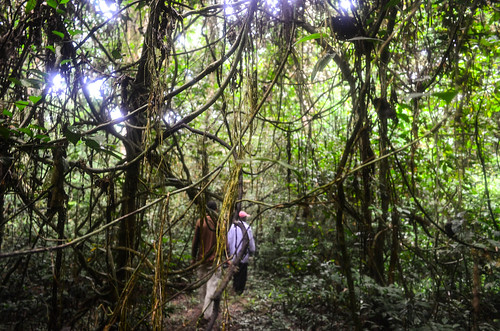
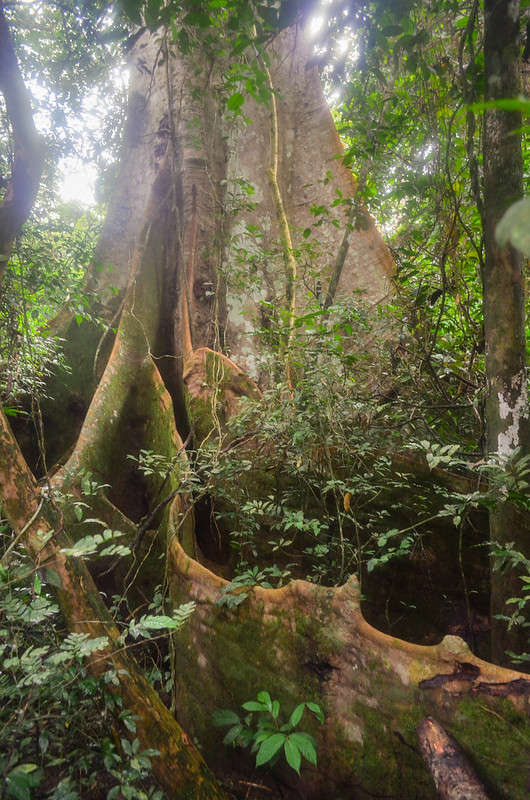

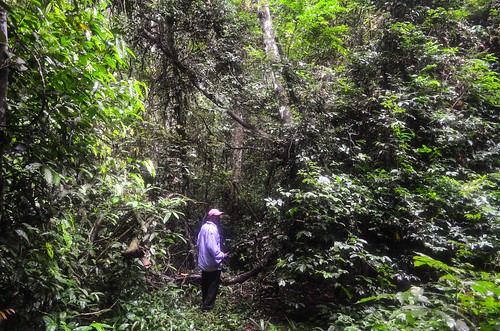
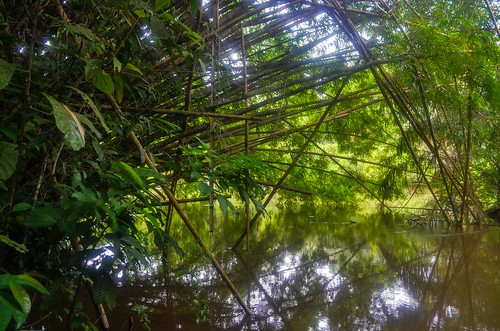

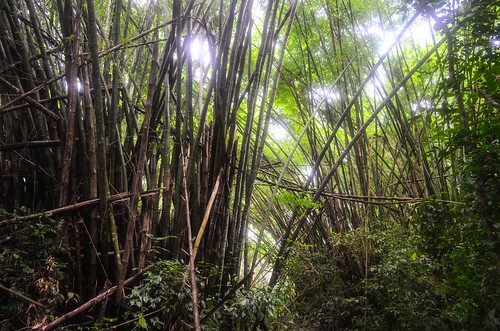
After two hours of walk, we have seen warthogs (almost) and many families monkeys, colobus and diamond monkeys, jumping after each other in very tall trees. That was overall an intense and deep jungle feeling.

I usually never go for the “tourist” activities, like tours and visits, labelled in USD. I always feel it is an unjustified large amount of money since I can get a much better and deeper experience being cycling, slow, in rural areas, and having in a way all the time I want. And “if it can be planned, then it’s not the real thing”. But this excursion on the island out of our way was really worth it.
We now have just enough cash to buy street food for the next two days of cycling until the Liberian border. The sky was blue in the morning but as soon as we take our seats, the rain starts hitting again …
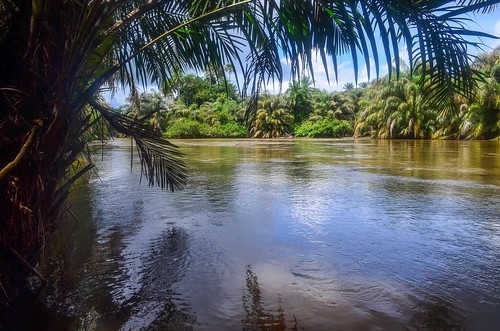






Hi JP,
Cindy here, remember? From the Netherlands, you contacted me over the email about visa regulations. Are you behind with posting on your blog? You must have passed Tiwai Island some time ago isn’t it? I liked it here, although ridiculous expensive! But you get a more realistic feel for the country than when you keep riding on the main roads. The nature is marvelous there! A lot of muddy roads and pools of water : (
How is it going? Where are you now? You made friends, I see. Nice!
Enjoy the ride, be safe,
Cindy
The posting has 1-2 months delay now. The info to date is my location in the top right widget.
I think Tiwai was OK priced for a tourist location, but the guys in charge are playful with the rules and prices 🙂